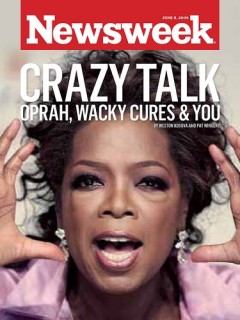Toxic Products: Threats to Water & Health
Majority of Chemicals not Tested
Awareness is growing about the presence of toxic chemicals in our consumer products and the risks these chemicals pose to our health and the health of the environment. Over 80,000 chemicals are in production in the U.S. Very few have regulations governing their release to the environment or are subject to monitoring. In addition, less than ten percent of these chemicals have been tested for their effect on human health.
Toxins in Consumer Products
Due to improved detection methods, we are discovering new chemicals in our air, water, sediment and biota. Examples include: flame retardants, plasticizers, pesticides, fluorinated surfactants and others. These chemicals are used in our electronic equipment, baby bottles, personal care products, non-stick pans, plastic children's toys and many other products. As science has improved we're finding toxic contaminants in common products we use everyday. And they are making their way from products into our environment and our bodies.
Impacts on Water & Health
Water Contamination
Just as mercury containing products contributed to mercury pollution in the Great Lakes and other waterways, consumer product chemicals provide an equal threat to the health of our waters. While contamination from products containing mercury has decreased in the Great Lakes by 96% due to mercury product bans, concentrations of flame retardants increased exponentially between 1980 and 2000, doubling every three years.
Municipal sewage treatment facilities are a major source of water contamination from many types of chemicals. Chemicals from personal care products for example, are rinsed down the drain or excreted as waste and end up at sewage treatment facilities. These facilities are not designed to specifically remove these chemical compounds and as a result, many are released into the environment. Other sources of environmental contamination are industrial manufacturing releases and the release of chemicals from consumer products.
Hormone Disruption in Fish & People
Certain chemicals disrupt the hormone system and examples of this disruption have been observed in fish below municipal sewage treatment outflows. Effects included reduced reproductive ability and intersex gonads (female ovary tissue was found distributed throughout the male testes). Hormone disrupting chemicals include phthalates (found in vinyl children's toys) and bisphenol A (used in may baby bottles and reusable water bottle.
These hormone disrupting chemicals also impact humans. Bisphenol A and phthalates harm reproductive and developmental health and they do so at low levels. Children and fetuses are at greatest risk because exposure to hormone disrupting chemicals during critical times in development can result in life long adverse health impacts.
Additive Effects of Multiple Chemical Exposure
Other chemicals promote cancer development in fish. A recent study by Oregon State University found juvenile rainbow trout exposed to a known carcinogen and then exposed to PFOA (a chemical commonly used in non-stick cookware) developed liver cancer in 60 to 70 percent of the trout sampled. In contrast, only 10 to 30 percent of trout exposed only to the carcinogen developed cancer. This demonstrates how exposure to multiple chemicals can have an additive effect, in this case doubling the trout's incidence of cancer. People are similarly exposed to thousands of different chemicals and their combined impact on our health is unknown.
Healthy Legacy Coalition
Clean Water Action Alliance is determined to help Minnesotans achieve a healthy legacy. Working with 29 organizations from across the state in the Healthy Legacy Coalition, we promote healthy lives by supporting the production and use of everyday products without toxic chemicals. We advocate for consumer education, business leadership, and protective policies to advance safe alternatives in Minnesota.
Solutions
Current policies and practices are failing us. To leave a healthy legacy for our children, we need safe products and safe ways to make them. We have to stop using some toxic substances, develop new processes and substances that prevent harm, and protect future generations by making a transition to safe products and production.
Many companies are already beginning to use safer substances to make products. Many cities and states are beginning to require them. Minnesota can take action too with laws phasing out toxic chemicals and investment in initiatives that pave the way to safer products and a thriving economy.
Take Action: Create a Healthy Legacy for Minnesota

South St. Paul ECFE parents attend Healthy Home Party
Educate your community: Host a free Healthy Home Party in your home, church, school or other organization. At Healthy Home Parties you learn about products that contain chemicals of concern, their safer alternative and steps you can take in your home and community to create a healthy environment. Contact Kim LaBo to schedule a party in your community.
Use your purchasing power: Research products before you go to the store and buy non-toxic products. By purchasing safe products you can influence what products stores sell.
Tell your legislator to support protective policies: Contact your state legislators and let them know you want people and products to be free of toxic chemicals. Support Healthy Legacy's efforts to phase out toxic chemicals here in Minnesota.
Support the creation of safe chemicals: Encourage businesses to develop and use safer chemicals. Learn how green chemistry can help us transition to safer chemicals.



 In 2005, the pharmaceutical company Biostratum, Inc. made a mistake -- they invested millions of dollars into developing a drug, only to discover that the active ingredient, pyridoxamine, was a common, naturally occurring substance that has been sold for decades at low cost.
In 2005, the pharmaceutical company Biostratum, Inc. made a mistake -- they invested millions of dollars into developing a drug, only to discover that the active ingredient, pyridoxamine, was a common, naturally occurring substance that has been sold for decades at low cost.
 In January of this year, Oprah Winfrey invited Suzanne Somers on her show to talk about health tips. The 62-year-old actress uses bio-identical estrogen cream and progesterone on her other arm two weeks a month.
In January of this year, Oprah Winfrey invited Suzanne Somers on her show to talk about health tips. The 62-year-old actress uses bio-identical estrogen cream and progesterone on her other arm two weeks a month.

